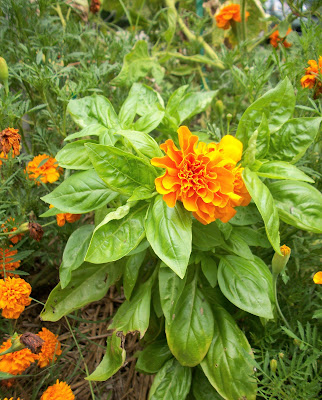If you could read one article that thoughtfully covers the topics of invasives, monocultures, ticks, and poop counting .....why would you seek further entertainment? So read on... and find another reason to dislike
Lonicera mackii (invasive Japanese bush honeysuckle):
http://www.sciencedaily.com/releases/2010/10/101011173245.htmA shorter and more academic version is at:
http://esameetings.allenpress.com/2008/P13016.HTM (Ecological Society of America meeting abstract)
The gist is that it seems Japanese bush honeysuckle creates a dense monoculture, providing a chateau of choice for deer. The deciduous leaves emerge earlier and cling later than any other native (or exotic) understory plant, allowing the deer to nest/rest more during the times of year that tick larva emerge.
For those who don't already have Japanese bush honeysuckle on their NIMBY list, there's basically a big discussion among horticultural nerds (I say that in front of the mirror) about
native plants, and
invasive exotics, and who should be allowed over the fence.
The flash card version is that there is a debate about which plants should go in our yards. On one end of the continuum you would only choose plants native to your area.....native since when? How about before people started importing plants from other countries, which probably started before the Mayflower, the Vikings, and all the other immigrants...hmmm...when there was no country called the USA.....OK back to the sentence, that we should plant only natives when possible, for biodiversity and ecological balance. A lot of plants
imported for landscape use and for agricultural purposes have no natural controls and tend to take over a landscape driving out a lot of other plants. Think Kudzu, think Burmese Pythons in the Everglades. There is real harm done and the 'downstream' effect can harm wildlife as well, because shelter and food options change. Heck, invasive
insects might even affect the trout fishing industry if you can believe that, but I don't have that reference to cite at hand.
But if we only planted natives we would have a lot less color and shape and choice in our gardens. No roses for example. No tall bearded iris.
Another end of the continuum in this discussion have us saying "Bring it on, we are the masters of our little acre."
Euonymous fortuneii Winter Creeper is such a useful plant, year round evergreen ground cover, it really serves an important purpose in the home landscape. Great weed suppression. Maintenance free. Sounds good to me.
So narrowing down the difficulty...let's try to avoid
invasive exotics, plants which are so fast to multiply, have zero local controls, and are rapidly displacing important medicinal, habitat, agricultural, and wildflower features. But be thoughtful about what other plants we put in the ground. Hollies? Laurels? Butterfly Bush? Lavender? Many of the varieties are not
native per se. But they stay where they are put, a lot of the time. So use them, just find out a little more before you plant. Just because it's for sale doesn't mean it doesn't have some 'side effects'.
My personal list, plants that are not my friends: Winter Creeper (
Euonymous fortuneii) , Japanese Honeysuckle (Lonicera mackii) , Chinese yam (Disocorea opposotifolia). A lot more on invasive exotics at:
http://www.tneppc.org/pages/initiativesSo much for flash cards, sometimes stuff takes a little explaining
 The bright red berries and leaves of many trees and shrubs are one of the highlights of cold weather. Hollies, Nandinas (pictured here, Nandina domestica), even the invasive Japanese Bush Honeysuckle produce many berries.
The bright red berries and leaves of many trees and shrubs are one of the highlights of cold weather. Hollies, Nandinas (pictured here, Nandina domestica), even the invasive Japanese Bush Honeysuckle produce many berries.








.JPG)







.JPG)
.JPG)



.JPG)